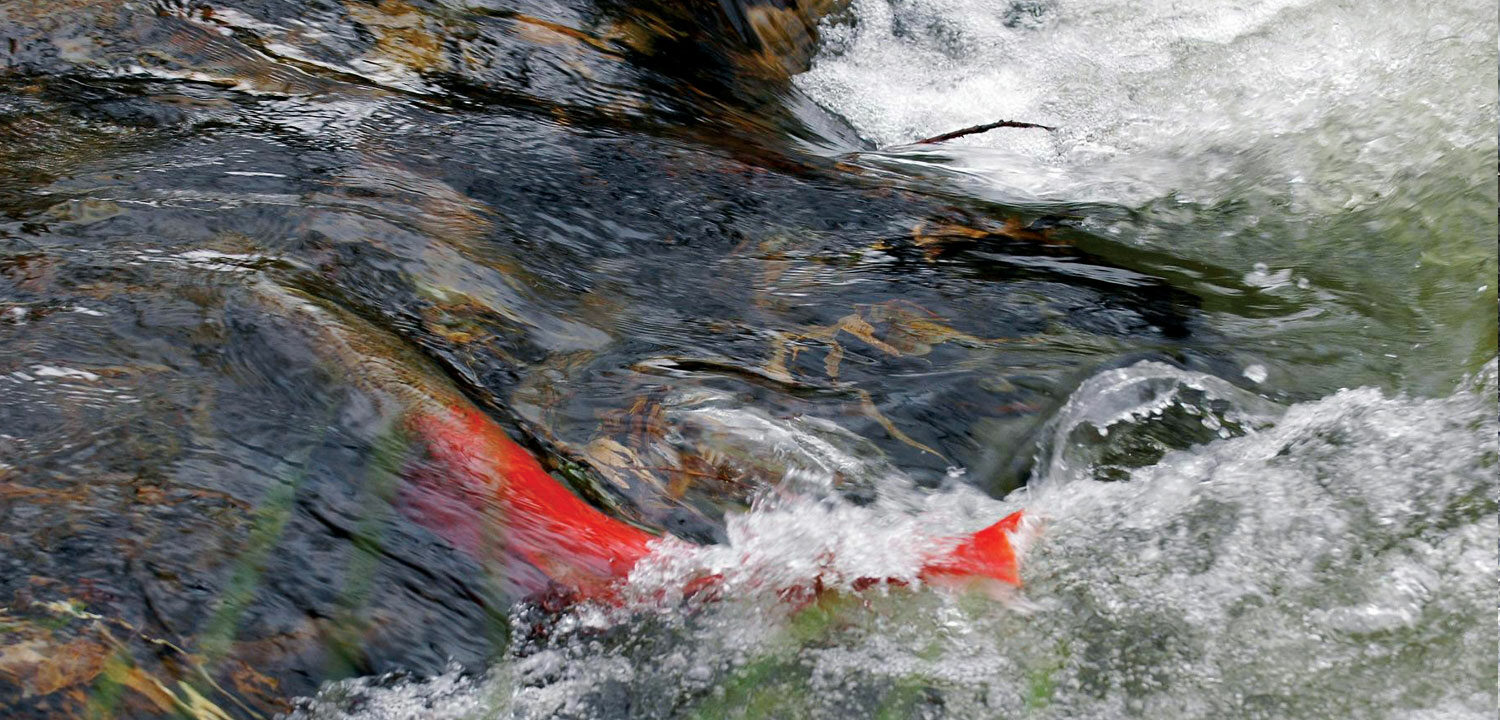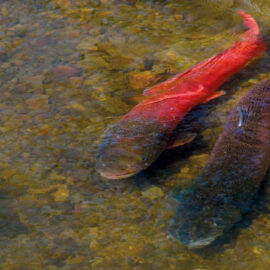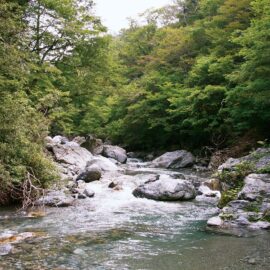Notes from the Field: Hope for Sakhalin taimen on Japan’s Sarufutsu River.
One of the largest salmon in the world still swims in the rivers of northern Japan. Taimen are an enigmatic and endangered member of the trout and salmon family that can reach lengths of over 6 feet, weights of over 100 pounds, and lifespans exceeding 30 years. I was first introduced to them in graduate school but it wasn’t until a trip to Russia in 2005 that I was able to observe one in the wild. Since that time I have grown fond, and very curious, about these mysterious fish.
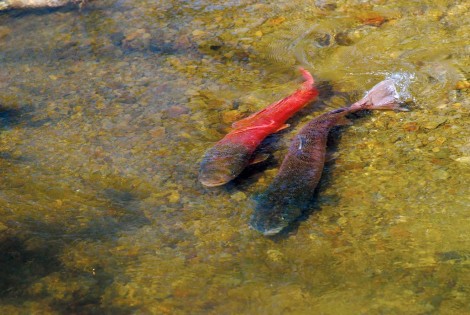
Sea-run taimen (Parahucho perryi) have a tenuous toe-hold in Japan — only seven relatively stable populations exist there now, down dramatically from a peak of 40+ populations just fifty years ago. That is why it is increasingly important to protect the few remaining populations. The Sarufutsu Watershed is one of the few undammed, healthy salmon rivers left in Japan that offers critical spawning and rearing habitat for taimen. A landmark agreement in 2009 between WSC and Oji Paper, a major Japanese forestry company, resulted in creation of the first protected area established on private lands in Japan for the purpose of aquatic biodiversity conservation.
In spring of 2013, WSC helped initiate a research project with our Japanese partners, including the National Institute of Environmental Studies, Itou no Kai (a local river conservation group) and Hokkaido University. Our primary purpose was to conduct research on sea-run taimen, known in Japan as itou (“ee-toe”). As part of a three month fellowship, I was tasked with establishing a new monitoring program there to estimate the current size of the taimen population and establish important benchmarks to help determine if our conservation actions are having the desired effect.
Surprises wait below the ice
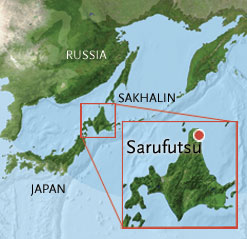
While the region abounds with natural wonders, to me nothing quite compares to witnessing a spawning pair of huge taimen in the headwaters of this beautiful river. The males, navigating up shallow, tributary streams lined with bamboo, turn a red hue that is like nothing I’ve seen in nature.I arrived in the Sarufutsu Village in early April. There was over a meter of snow on the ground and ice still covering the river. These fish initiate their spawning run in early spring, migrate up to the headwaters, and spawn when the river temperatures reach 5-7° C. We counted fish using an acoustic camera—a highly sophisticated piece of electronics that uses underwater sound to produce a video quality image of fish that swim through the beam. After arriving at our site on snowmobiles and chipping out ice to get access to the river bank, we anchored the camera to the bottom of the river, and monitored the number of taimen swimming upstream past the device for forty consecutive days.
Over the course of our 40 days on the river we counted a total of 335 sea-run taimen. This is unequivocally good news because we feared the population would be less than 100 adults!
Clearing the way for safe passage
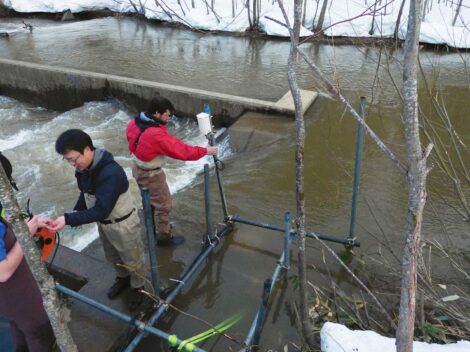
One of the emerging threats to taimen is poorly constructed and maintained culverts—pipes that are placed under road crossings to allow easy passage of water but not necessarily easy passage for fish. Based on a tip we received from some hikers during the field season, we inspected a road culvert upstream of our study area. As reported, we found the culvert to be completely blocked by wood. I, along with members of Itou no Kai, returned with ropes, winches and chainsaws and after several hours of hard work, we finally broke the log jam! Just days later we observed that several taimen had successfully passed through the culvert and were spawning upriver.In September of 2013 we received word that another culvert issue had been resolved. A private landowner in the watershed volunteered to completely remove a culvert and restore the natural stream channel on his property. While these stream restoration efforts are still a very rare event in Japan, we are noticing greater recognition of the importance of restoring natural river habitat for the benefit of salmon and other wildlife.
Securing a future for taimen
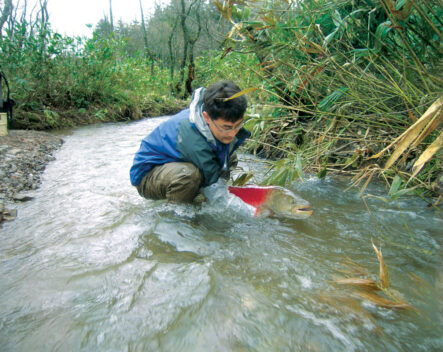
While the Sarufutsu population of sea-run taimen enjoys a considerable amount of protection, made possible by a small group of committed local conservationists, the status of the species elsewhere is in serious peril. Great sea-run taimen rivers in neighboring Russia, like the Koppi and Dagi, still support relatively abundant populations, but anecdotal accounts from the field suggest we might be losing ground. Given threats will not likely abate any time soon, and the specter of climate change looming, we need to increase our efforts at research and conservation to secure these threatened populations.In spring 2014 I will return to this wild patch of nature, renewed and anxious to reacquaint myself with the enigmatic itou. We hope our work in the Sarufutsu might provide insight into how to launch a similar effort in Russia—as securing a future for these giant salmonids will take a coordinated effort across not just one river, but their entire range.
